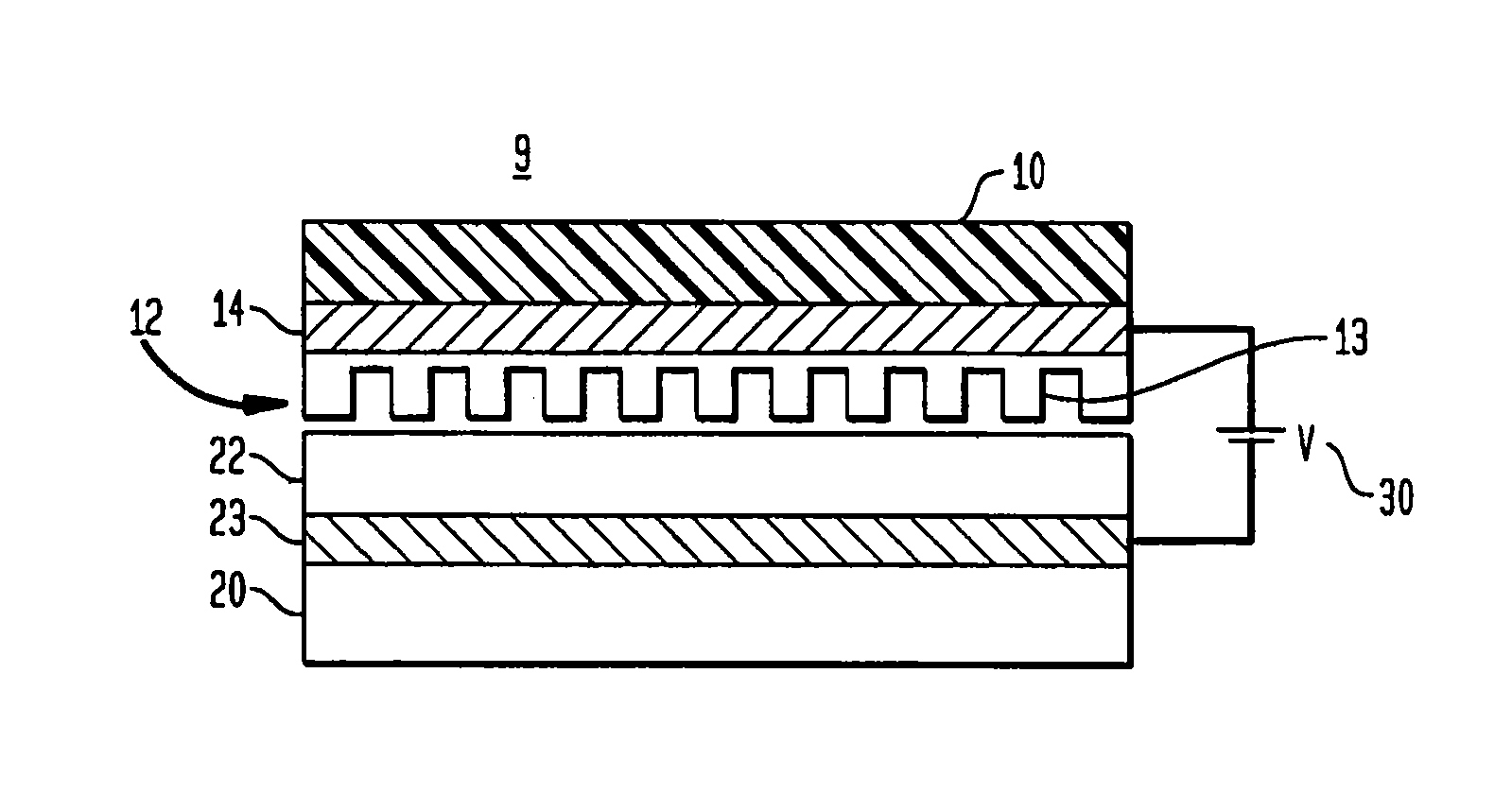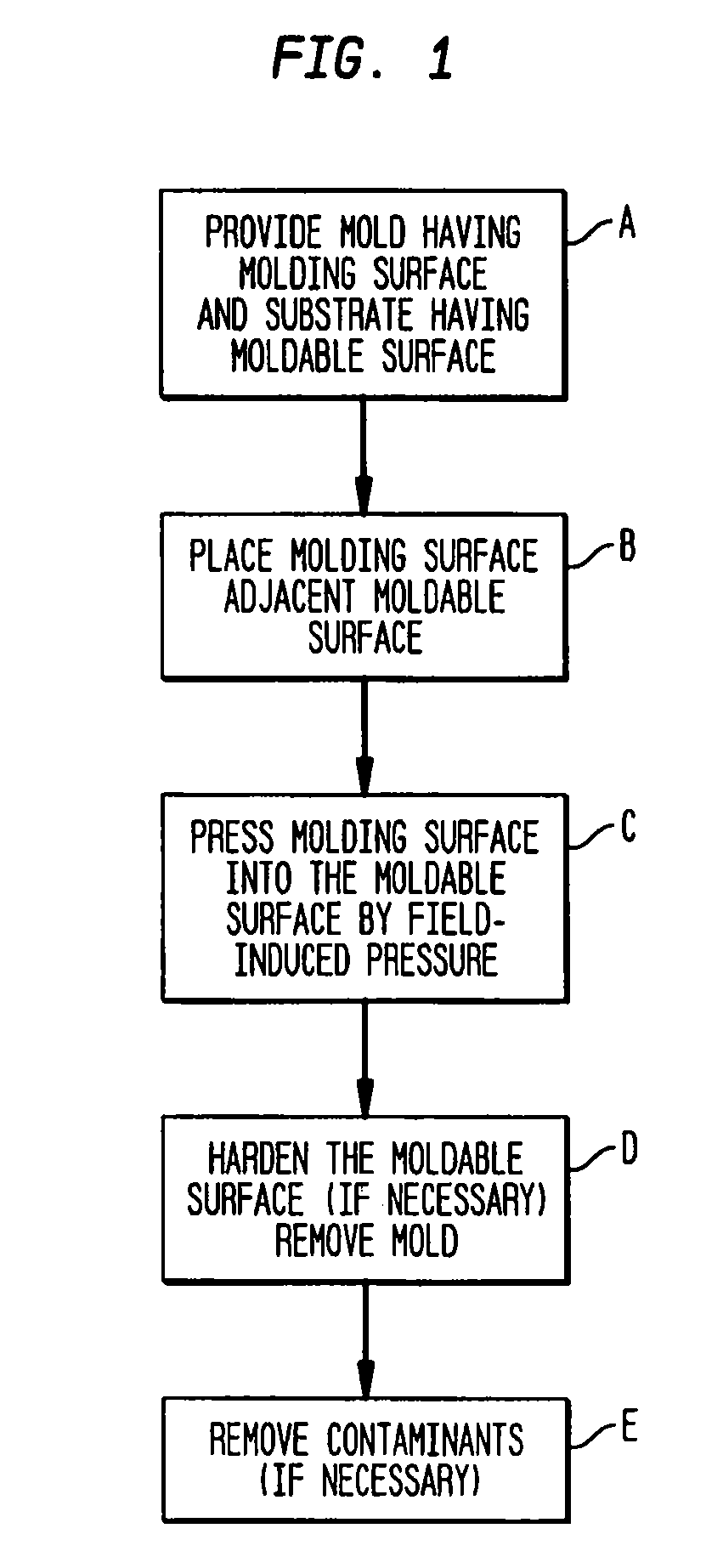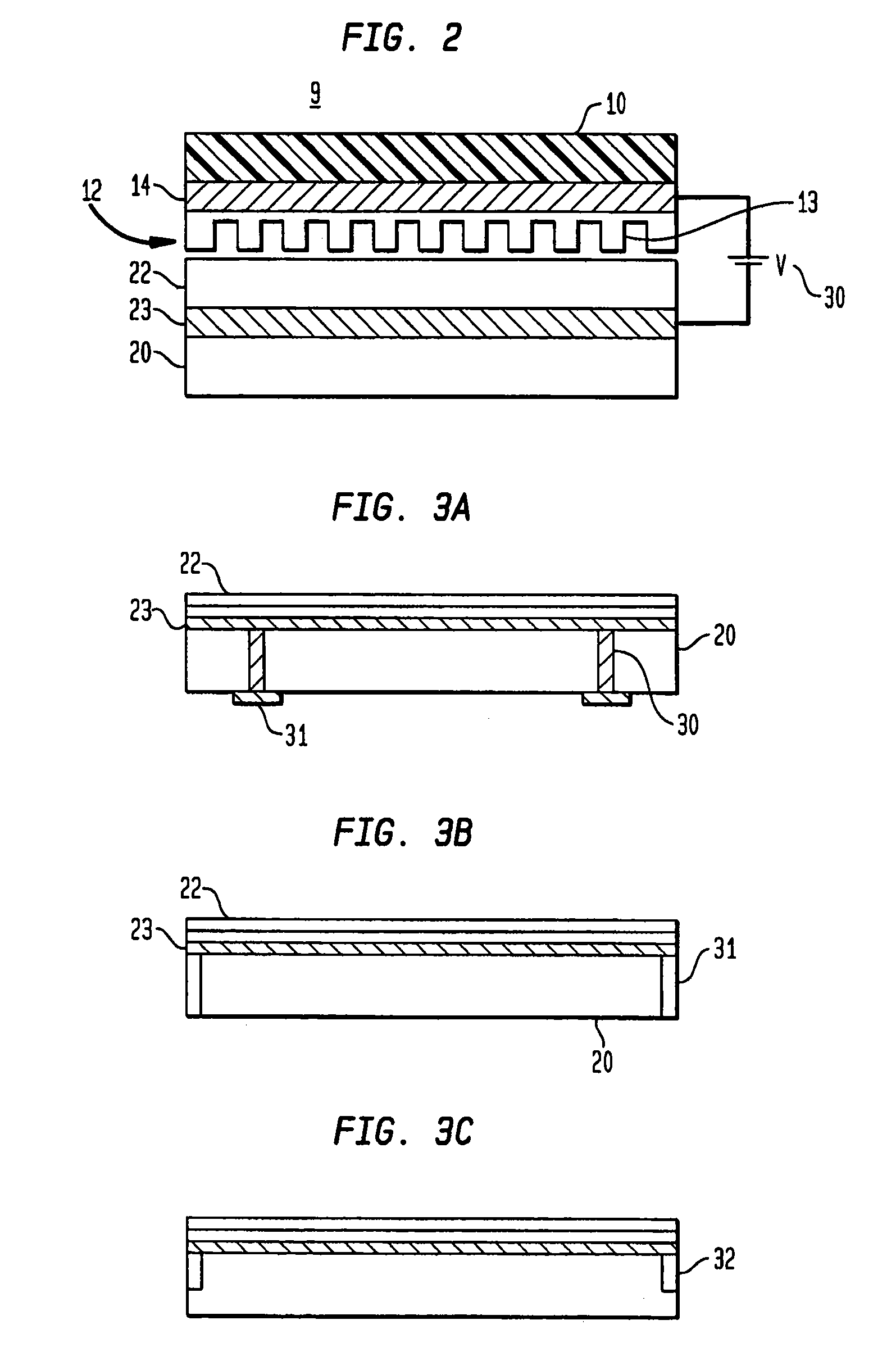Methods and apparatus of pressure imprint lithography
a technology of imprint lithography and imprinting, applied in the field of imprint lithography, can solve the problems of limited resolution, increased equipment cost, and difficulty in toleran
- Summary
- Abstract
- Description
- Claims
- Application Information
AI Technical Summary
Benefits of technology
Problems solved by technology
Method used
Image
Examples
Embodiment Construction
[0024]Referring to the drawings, FIG. 1 is a schematic flow diagram of an improved process for imprint lithography using field-induced pressure. An initial step shown in Block A, is to provide a mold having a molding surface such as plurality of protruding features and a substrate having a surface of moldable material such as one or more moldable thin films. Protruding features are preferably micrometer scale features and, more advantageously, nanoscale features. The method is highly advantageously where the mold surface has at least two spaced apart protruding features. A moldable material is one which retains or can be hardened to retain the imprint of the protruding features from the mold surface.
[0025]The next step, shown in Block B, is to place the mold adjacent the moldable surface. If the moldable surface is a thin film that already includes a previously formed pattern, then the pattern of the mold should be carefully aligned with the previous pattern. This can be done by ali...
PUM
| Property | Measurement | Unit |
|---|---|---|
| thickness | aaaaa | aaaaa |
| moldable | aaaaa | aaaaa |
| conductive | aaaaa | aaaaa |
Abstract
Description
Claims
Application Information
 Login to View More
Login to View More - R&D
- Intellectual Property
- Life Sciences
- Materials
- Tech Scout
- Unparalleled Data Quality
- Higher Quality Content
- 60% Fewer Hallucinations
Browse by: Latest US Patents, China's latest patents, Technical Efficacy Thesaurus, Application Domain, Technology Topic, Popular Technical Reports.
© 2025 PatSnap. All rights reserved.Legal|Privacy policy|Modern Slavery Act Transparency Statement|Sitemap|About US| Contact US: help@patsnap.com



